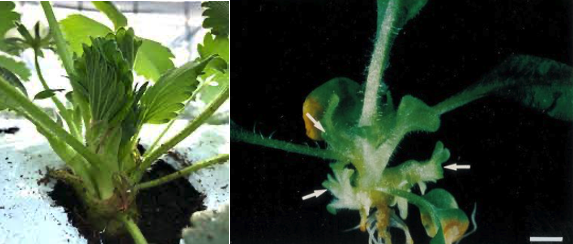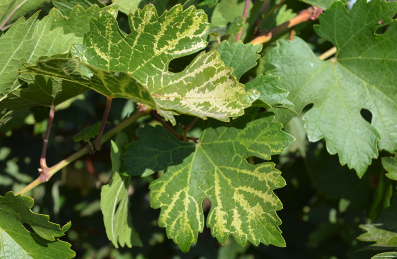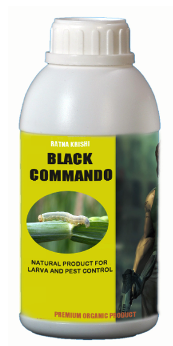🚥 Ecology
Interaction of Nematodes with Micro-Organisms
Which of the following is wrong regarding nematode interactions?
- Plant parasitic nematodes (PPN) favour the establishment of secondary pathogens viz., fungi, bacteria, virus etc.
- The nematodes alter the host in such a way that the host tissue becomes suitable for colonization by the secondary pathogens. Even though the nematodes themselves are capable of causing considerable damage to the crops, their association with other organisms aggravate the disease.
- The nematodes cause mechanical wound which favours the entry of micro-organisms.
- In some cases, the association of nematode and pathogen breaks the disease resistance in resistant cultivators of crop plants.
Nematode – fungus Interaction
- Nematode – fungus interaction was first observed by Atkinson (1892) in cotton.
Fusarium wiltwas more severe in the presence of root knot nematode (Meloidogyne spp).
Nematode – bacterium interactions
- Nematode – bacterium interactions are comparatively fewer than the nematode – fungal interactions.

- Association of seedgall nematode Angunia tritici with bacterium Clavibacter tritici (Clavibacter tritici) in causing
Tundu or Yellow Ear Rot diseaseof wheat. Nematodes alone cause earcockle disease. Bacterial cells are present in soil, on surface or inside the galls. The nematode acts as a vector carrying the bacterium on their surface. The tundu (yellow ear rot) disease cannot develop without the involvement of nematode.

- A second, pathologically more relevant interaction between foliar nematode Aphelenchoides fragariae and bacterium Clavibacter fascians is evident on strawberry. Plants infected with nematodes alone are either symptomless or bear narrow (alaminate) leaves while bacteria alone also cause very little effect. But plants with both the organisms (bacteria carried by the nematode on its body surface) show varying degree of symptoms including
cauliflower diseasein extreme cases. Besides other deformities like stunting and malformation of flowers, such plants continually produce axillary buds in the crown, which give the appearance of small cauliflowers.
Nematode – Virus Interaction
- In nematode – virus complex, nematode serves as a
vector. - Numerous virus – nematode complexes have been identified after the pioneer work by Hewit, Raski and Goheen (1958) who found that Xiphinema index was the vector of
grapevine fan leaf virus.
- All genera of virus vector nematodes belong to order
Dorylaimida.
- Nematode transmitted only RNA viruses.
NEPO viruses
- NEPO: Nematode-transmitted polyhedral particles of viruses.
- Xiphinema spp., Longidorus spp., and Paralongodorus spp. transmit the ring spot viruses which are called
NEPOderived from Nematode transmitted Polyhedral shaped particles. - Examples:
- Grapevine Fan Leaf Virus (GFLV): Xiphinema index
- Tomato Black Ring Virus (TBRV): Longidorus sp.
- Raspberry Ring Spot Virus (RRSV): Longidorus elogatus
- Tobacco/Tomato Ring Spot Virus (TRSV): Xiphinema americana
NETU or TOBRA Viruses
- NETU: Nematode transmitted tubular particles.
- Trichodorus spp. and Paratrichodorus spp. transmit the rattle viruses and called
NETUderived from Nematode transmitted Tubular shaped particles. - Examples:
- Tobacco Rattle Virus (TRV): Trichodorus similis

- Pea Early Browning Virus (PEBV): Trichodorus sp.
- Pepper Ring Spot Virus (PRSV): Paratrichodorus minor
- Tobacco Rattle Virus (TRV): Trichodorus similis
EPN
- There is category of nematodes that are beneficial to agriculture and can be use for the biological control of insect pests of crops. These are commonly known as Entomopathogenic Nematodes (EPNs).
- Nematode families of
SteirnematidaeandHeterorhabditidaehave potential as biocontrol agents. - Because these are Entomopathogenic nematode and are facultative parasites they associated with symbiotic bacteria. E.g.
- Xenorhabdus bacteria associated with nematode Steinernema
- Photorhabdus bacteria is associated with nematode Heterorhabditid
- Eg. The formulation of Heterorhabditis indicus used against Holotrichia serrata (White Grub). It is sold under the trade name of
Soldier.
EPN Products
- Green Commandos (Steinernema carpocapsae) and Soil Commandos (Heterorhabditis bacteriophora), two EPN-based formulations formed by Ecomax Compant (Trade name:
Ecomax) in 1980 using exotic species, were both removed from the marketplace due to their lack of effectiveness against insect pests due to their poor adaptability to Indian environmental conditions or formulation issues. These are used for soil dwelling insects or larvae. - The product of Neoplectana carpocapsue with bacteria Achromobacter nematophilus is commonly named as
DD-136in India used for the management of lepidopteran insect pests of apple, rice and sugarcane. It is also available in several labs under the Trade name of Black Commando.
References
- Dropkin, V.H. 1980. Introduction to plant nematology. John Wiley and sons, INC. New York.
- Singh, R.S and Sitaramaiah, K. 1994. Plant pathogens. The plant parasitic nematodes. Oxford & IBH Pub. Co. Pvt. Ltd. New Delhi.
- Parvata Reddy, P. 1983. Plant nematology. Agricole Pub. Co., New Delhi.
- Southey, J. F. Laboratory methods for work with plant and soil nematodes Tech.
- Bull. Min. Agric. Fish. Food. Her Majesty’s Stationary Office, London.
- Walia, R. K and Bajaj, H. K (2014). Textbook of Introductory Plant Nematology. Directorate of Knowledge Management in Agriculture, ICAR, New Delhi.
- Kumar, V., Khan, M.R. & Walia, R.K. Crop Loss Estimations due to Plant-Parasitic Nematodes in Major Crops in India. Natl. Acad. Sci. Lett. 43, 409–412 (2020). https://doi.org/10.1007/s40009-020-00895-2
Which of the following is wrong regarding nematode interactions?
- Plant parasitic nematodes (PPN) favour the establishment of secondary pathogens viz., fungi, bacteria, virus etc.
- The nematodes alter the host in such a way that the host tissue becomes suitable for colonization by the secondary pathogens. Even though the nematodes themselves are capable of causing considerable damage to the crops, their association with other organisms aggravate the disease.
- The nematodes cause mechanical wound which favours the entry of micro-organisms.
- In some cases, the association of nematode and pathogen breaks the disease resistance in resistant cultivators of crop plants.
Nematode – fungus Interaction
- Nematode – fungus interaction was first observed by Atkinson (1892) in cotton.
Fusarium wilt …
Become Successful With AgriDots
Learn the essential skills for getting a seat in the Exam with
🦄 You are a pro member!
Only use this page if purchasing a gift or enterprise account
Plan
Rs
- Unlimited access to PRO courses
- Quizzes with hand-picked meme prizes
- Invite to private Discord chat
- Free Sticker emailed
Lifetime
Rs
1,499
once
- All PRO-tier benefits
- Single payment, lifetime access
- 4,200 bonus xp points
- Next Level
T-shirt shipped worldwide

Yo! You just found a 20% discount using 👉 EASTEREGG

High-quality fitted cotton shirt produced by Next Level Apparel